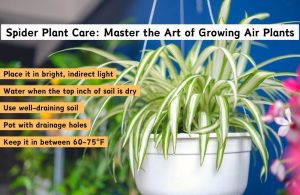This article covers the following areas –
- How Much Water Snake Plants Need?
- When to Water Your Snake Plant
- Signs of Over-Watering
- Signs of Under-Watering
- Seasonal Adjustments to Watering
- Tips for Perfect Watering for Snake Plants
- Frequently Asked Questions
- Final Note
If you’ve recently brought a snake plant into your home or are considering it, you’re in for a treat. However, to ensure your snake plant stays happy, you must know how to water it right. So, let’s jump into everything about watering snake plants. I’ll show you some easy tips that anyone can follow to keep their snake plant thriving.
Water your snake plant only when the top inch of soil is dry, typically every 2-6 weeks. Use room-temperature water, soaking the soil thoroughly until excess drains out. Avoid overwatering to prevent root rot, a common issue with snake plants.
For comprehensive insights on maintaining the optimal health of your snake plant, including signs of overwatering and underwatering, as well as seasonal watering adjustments, continue reading our detailed guide.
How Much Water Snake Plants Need?

Snake plants are pretty chill when it comes to water. They don’t need much to be happy because they’re super good at handling dry spells. Think of them as the camels of the plant world. So, you’ll only need to water them once every 2-6 weeks. It’s all about giving them just enough, not too much.
When it’s time to water, make sure you do it right. Give the soil a good soak so that the water gets down deep. This helps the roots get all the moisture they need to thrive. But here’s the catch – you gotta wait until the soil is totally dry before watering again.
Checking the soil is key to not overdoing it. Just stick your finger in the soil about an inch deep. If it feels dry, grab your watering can. Hold off on watering for a bit longer if it’s still damp. This little check helps you avoid the biggest no-no with snake plants: too much water.
The exact timing between waterings can change based on where you keep your plant. If your room is super sunny and warm, you might need to water more often. But if it’s in a cooler, shadier spot, you can wait longer between waterings. Just keep an eye on the soil; your snake plant will be fine.
When to Water Your Snake Plant
Water your snake plant only when the top inch of soil feels dry, which might be every 2-6 weeks. Light, temperature, and humidity significantly influence how often you should water.
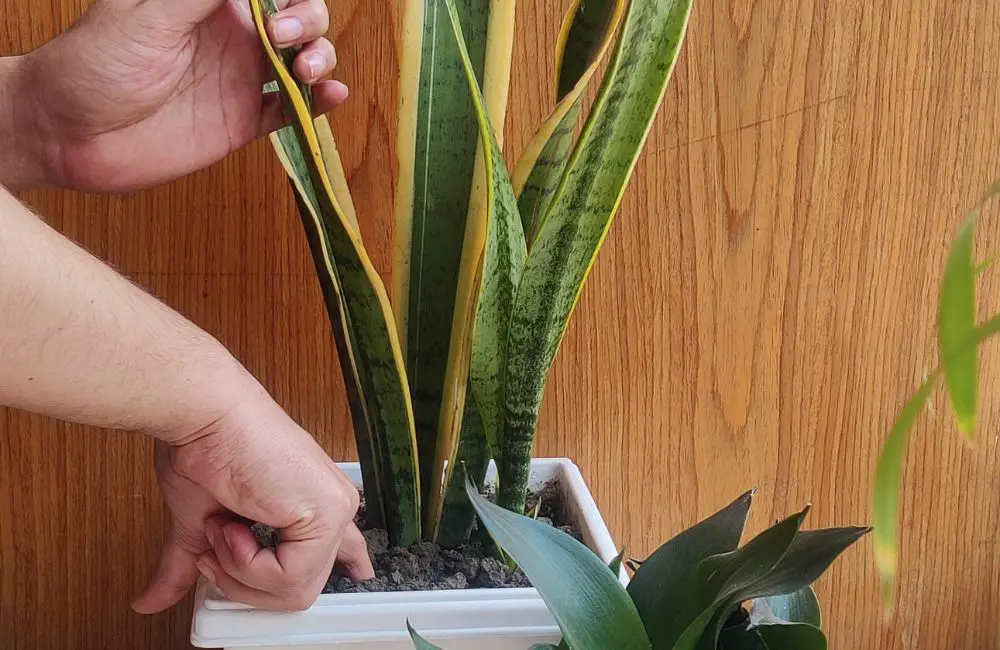
Checking the Soil
To determine the perfect time for watering your snake plant, gently touch the soil about an inch deep. If this layer feels dry, it’s time to water. This method prevents the common overwatering issue, ensuring you provide just the right amount of moisture for your plant’s needs.
By feeling the top inch of soil for dryness, you’re taking a simple yet effective step toward proper snake plant care. Overwatering can lead to root rot, so this method only helps you water your plant when necessary, promoting a healthier growth environment.
It’s easy to overwater plants, thinking more water equals more love. However, for snake plants, this isn’t the case. Checking the soil first ensures you’re not giving your plant more water than it requires, avoiding potential waterlogging and the health issues that come with it.
Environmental Factors
Light and warmth can make your snake plant thirsty more quickly, requiring more frequent watering. In contrast, plants in cooler or less-lit areas will need water less often. Adjust your watering habits to the conditions of your home for optimal plant health.
Your snake plant’s thirst varies with its environment. A plant in a sunny, warm spot will need watering more often than one in a cooler, shaded area. These factors can help you tailor your watering schedule to meet your plant’s specific needs.
Plants in different environments have unique watering needs. Water might be needed more frequently for a snake plant in a bright, warm room. However, in a dim, cooler space, it will require less. Matching your watering routine to these conditions ensures your plant stays healthy and vibrant.
Humidity also affects how often your snake plant needs water. Your plant may need a little more water than usual in dry environments. Conversely, in more humid settings, you can reduce watering frequency. It’s all about adjusting to maintain the perfect moisture balance for your plant.
Signs of Over-Watering
Overwatering your snake plant can lead to symptoms like soft, mushy leaves, yellowing of the foliage, and dangerous root rot. To avoid these issues, adjusting your watering schedule and ensuring the soil has time to dry out thoroughly between waterings is crucial.
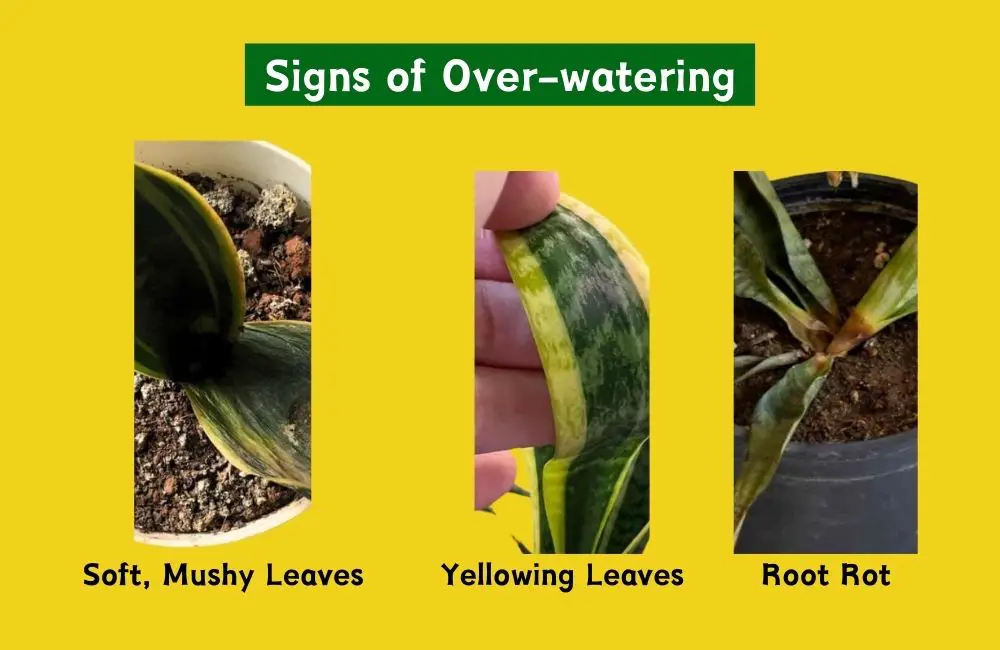
Soft, Mushy Leaves
When the leaves of your snake plant turn soft and mushy, it’s a red flag that you’re giving it more water than it can handle. This excess water compromises the plant’s structural integrity, making the leaves lose their firmness and become squishy.
The appearance of soft and mushy leaves on your snake plant indicates overwatering. This can lead to significant health problems for the plant. Preventing this involves letting the soil completely dry out before you decide to water again, which helps maintain proper moisture balance.
Noticing your snake plant’s leaves have turned soft and mushy is a sign to cut back on watering immediately. Allowing the soil to fully dry before the next watering can help stop further damage and allow your plant to recover its natural firmness.
Yellowing Leaves
When the leaves of your snake plant start turning yellow, it’s often because it’s been overwatered. The change in leaf color serves as a distress signal that the plant’s water intake needs to be adjusted to prevent further damage.
If your snake plant has yellow leaves, it’s signaling that it’s getting too much water. To correct this, check the soil’s moisture level and adjust your watering routine accordingly. This can help your plant recover and return to its vibrant green color.
Yellowing leaves on your snake plant indicate it’s time to reassess how often you’re watering. Providing a drier environment by allowing the soil to dry thoroughly between waterings will help the leaves regain their green vitality.
Root Rot
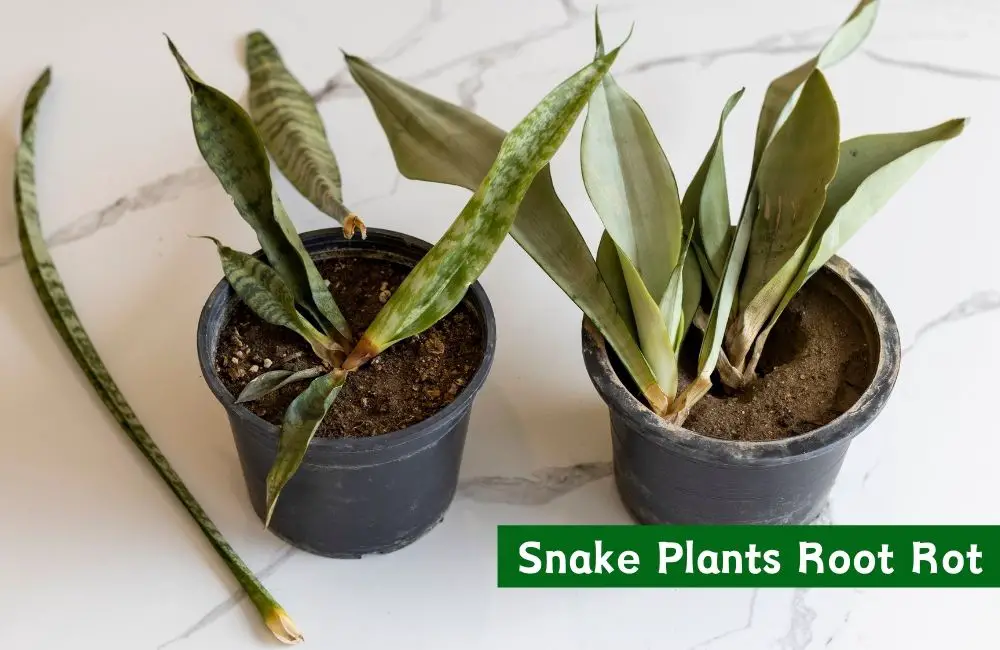
Root rot, caused by overwatering, is a severe and potentially fatal condition for your snake plant. If you notice your plant’s roots are soggy or decaying, immediate action, such as repotting into fresh and dry soil, is necessary for survival.
The most severe consequence of overwatering your snake plant is root rot. If the roots become soggy and decay, repotting the plant into fresh, dry soil as soon as possible is crucial. This intervention is vital to save your plant and reverse the damage caused by too much water.
Discovering root rot in your snake plant demands quick action. Repotting the plant into new, dry soil can help it recover. This is an important step if you’ve been overwatering, as it allows your plant to heal and grow healthily.
Finding root rot in your snake plant is a serious issue that requires immediate attention. Transferring it to fresh soil can help save your plant from the adverse effects of overwatering. This prompt action is essential for the health and recovery of your snake plant.
Signs of Under-Watering
Under-watering a snake plant manifests as dry, curling leaves, significantly slow growth, and soil detaching from the pot edges. These symptoms indicate a need for increased watering frequency to maintain plant health.
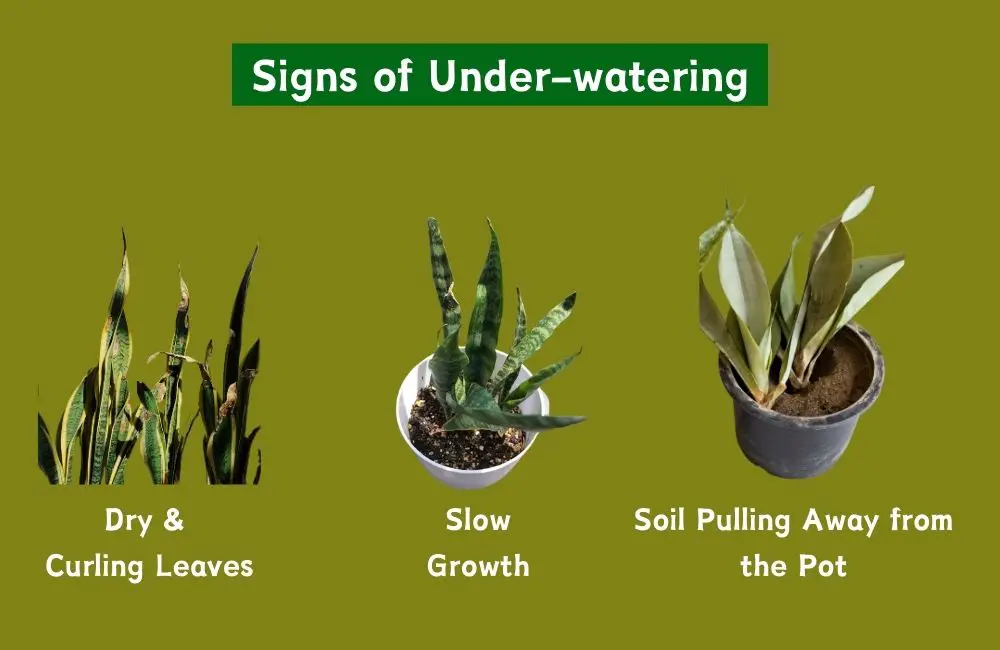
Dry, Curling Leaves
When you notice your snake plant’s leaves becoming dry and curling at the edges, it’s a distress signal indicating insufficient water intake. This condition suggests the plant is trying to minimize water loss by curling its leaves to reduce the surface area exposed to the air, signaling it’s time for a thorough watering.
Dry and curling leaves on a snake plant indicate that the plant is not receiving enough moisture. This can lead to dehydration stress, affecting the plant’s overall health. To remedy this, provide enough water to saturate the soil, reaching the roots to revitalize your plant.
Finding your snake plant with dried-out and curling leaves indicates it’s time to reassess your watering routine. The plant conserves moisture to survive, so it needs a more consistent watering schedule. Proper hydration will help restore its leaves to their natural, vibrant state.
Slow Growth
Snake plants are known for their slow-growing nature, but if you notice an unusual slowdown in growth, it might be because the plant is not receiving enough water. Adequate hydration is essential for supporting the snake plant’s growth, even though it grows slowly by nature.
If your snake plant shows exceptionally slow growth, it’s likely a sign of under-watering. Snake plants need sufficient water to facilitate their growth processes. Regular watering can help stimulate growth and ensure the plant remains healthy and strong.
A noticeable reduction in your snake plant’s growth rate often indicates inadequate watering. Providing sufficient water at the right intervals can help improve the plant’s growth pace, contributing to its overall well-being and longevity.
Soil Pulling Away from the Pot
If the soil in your snake plant’s pot starts pulling away from the sides, it indicates that the soil is overly dry and your plant is likely under-watered. This shrinkage indicates that the plant’s root system is not getting enough moisture, which is crucial for its survival and health.
Observing the soil in your snake plant’s pot detaching from the pot’s edges is a telltale sign of under-watering. This situation means the soil has become too dry, potentially harming the plant’s health. Watering the plant as soon as this sign is noticed is essential to rehydrate the soil and support the plant’s needs.
The soil detachment from the edges of your snake plant’s pot signifies a severe lack of moisture. This drying condition can lead to stress and potential damage to the plant. Prompt watering to moisten the soil is critical to reviving the plant and ensuring it thrives.
Seasonal Adjustments to Watering
Adjust your snake plant’s watering routine with the seasons: Increase it during active growth in spring and summer and decrease it in dormant fall and winter to prevent issues like root rot.
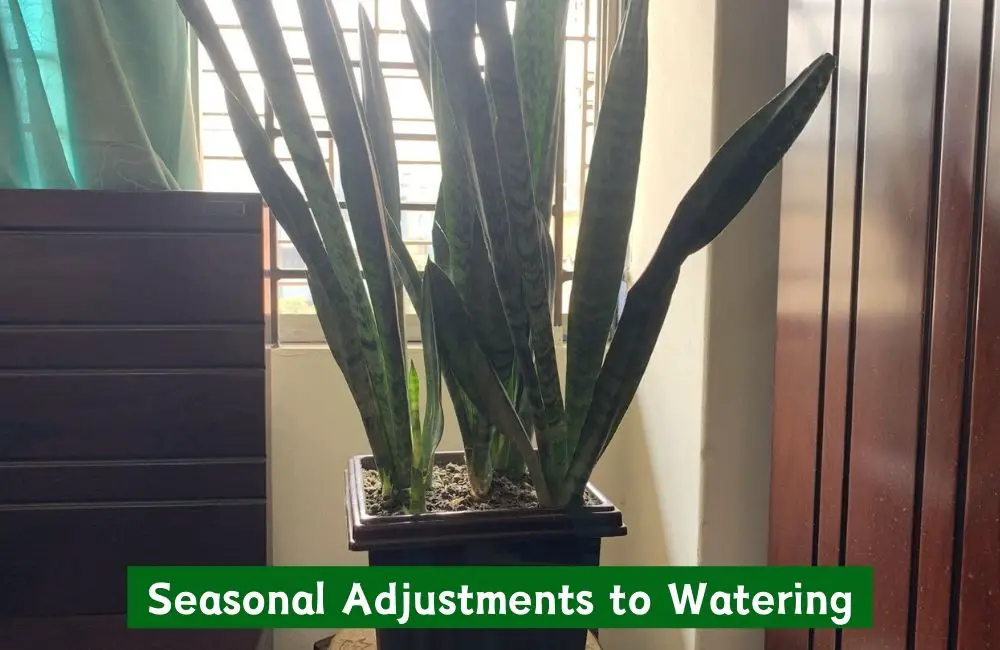
Growing Season (Spring and Summer)
During spring and summer, your snake plant gears up for growth, needing more water to support its active phase. This is when it’s building new leaves and could use the extra hydration for better development.
As your snake plant enters its growing season in the warmer months, it’ll appreciate a little more water. This boost supports its growth spurt, helping it stay healthy and vibrant. Just make sure the soil dries out between waterings.
Your snake plant is ready to grow when it’s bright and warm outside. Giving it slightly more water during this time helps it make the most of the growing season. It’s all about supporting those new leaves and stronger roots.
As temperatures rise in spring and summer, your snake plant’s thirst increases. This is an active period for the plant, and more water can help it thrive. When the soil and water are dry, keep an eye on them.
Dormancy (Fall and Winter)
When fall and winter roll around, your snake plant takes a little nap. It’s dormant, meaning it’s not growing much, if at all. During this time, cut back on watering to avoid problems like root rot, which is more likely when it’s cool, and the plant isn’t using as much water.
During the cooler, darker fall and winter months, your snake plant slows down. Since it’s not actively growing, it doesn’t need as much water. Reducing how often you water during this time helps keep the soil from staying too wet and causing root issues.
In the fall and winter, your snake plant isn’t looking to grow, so it doesn’t need much water. This is its time to rest, and overwatering could harm it. Keep the watering minimal, allowing the soil to stay dry longer than in the growing season.
As the weather cools, so should your watering routine. Your snake plant enters a dormant state in these months, reducing its water needs significantly. A little goes a long way to prevent water-related problems during this rest period.
Tips for Perfect Watering for Snake Plants
For optimal snake plant care, mastering the art of watering is key. Here are professional tips to ensure your snake plant survives and thrives.
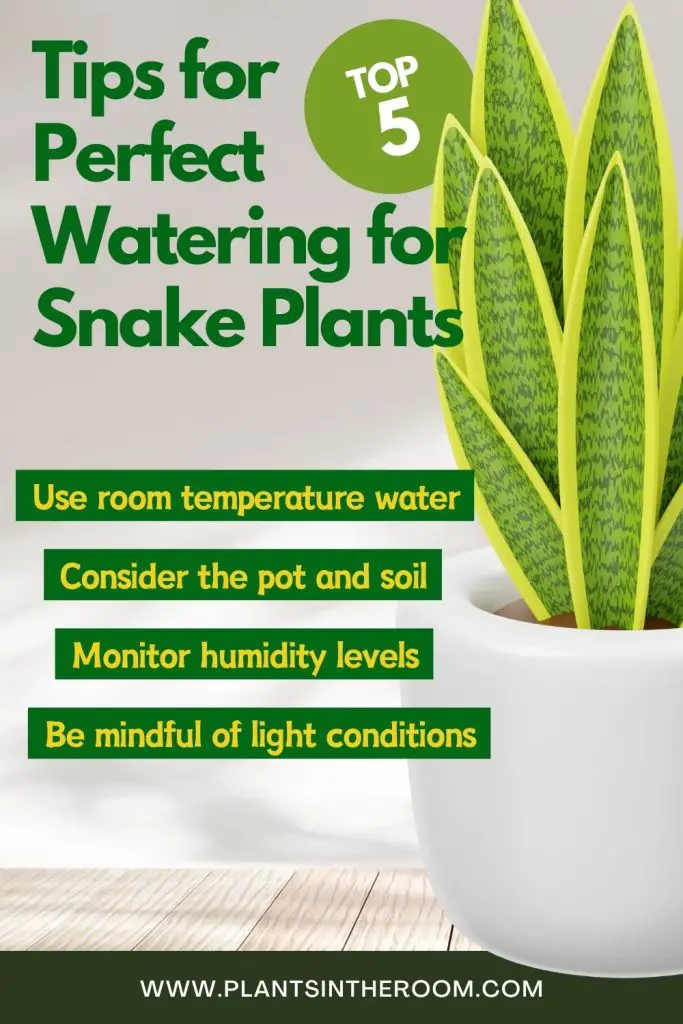
1. Use Room Temperature Water
Watering your snake plant with water at room temperature is vital to avoid shocking its roots. Cold water can stress your plant, potentially hindering its growth and health. Using water that’s neither too cold nor too hot provides a more natural and comfortable environment for your plant’s roots to absorb moisture effectively.
The shock from cold water can harm your snake plant, leading to stress and poor health outcomes. Room-temperature water mimics the natural rainfall that snake plants would experience in their native environments, promoting healthier growth and avoiding the risk of root shock, which can lead to leaf discoloration and stunted growth.
2. Consider the Pot and Soil
Selecting the right pot and soil for your snake plant is crucial for its well-being. A pot with sufficient drainage holes ensures excess water can escape, preventing the soil from becoming waterlogged. Similarly, well-draining soil helps avoid moisture accumulation around the roots, significantly reducing the risk of root rot, a common issue in overwatered snake plants.
Combining a well-draining pot and soil creates an ideal environment for your snake plant, allowing it to manage water intake efficiently. This setup mimics the plant’s natural habitat, where water drains quickly through the soil, ensuring the roots remain healthy and oxygenated.
3. Monitor Humidity Levels
While snake plants are tolerant of dry air, extremely low humidity levels can lead to symptoms of under-watering, such as curled leaves and stunted growth. If you live in a particularly dry climate or use heating systems that reduce indoor humidity, consider occasionally misting your snake plant’s leaves or gently placing a pebble tray with water beneath the pot to increase the surrounding humidity.
Adjusting the humidity around your snake plant can help replicate the more humid environments where they thrive naturally. This slight increase in humidity can help prevent the tips of the leaves from becoming brown and dry, promoting a more vibrant and healthy appearance.
4. Be Mindful of Light Conditions
The light conditions in your home play a significant role in determining your snake plant’s water needs. Plants situated in areas with lower light may require less frequent watering than those in brighter, sunnier spots. Adjusting your watering schedule based on the light exposure ensures your plant receives the right amount of water without the risk of over- or under-watering.
Observing how different light conditions affect your snake plant’s water consumption can help you tailor your care routine for optimal health. For instance, a snake plant in a bright, south-facing window might dry out faster and, thus, need watering more frequently than one in a dimly lit corner.
By adhering to these pro tips and closely monitoring your snake plant’s response to its watering routine, you can cultivate a healthy, vibrant plant that enhances your living space for years. Remember, every snake plant is unique, and adjusting care practices to meet its specific needs is the key to successful indoor gardening.
Frequently Asked Questions
Water your snake plant every 2-6 weeks after ensuring the top inch of soil is completely dry.
Yes, use tap water left out for 24 hours at room temperature for your snake plant.
Signs include mushy leaves, yellowing, and potential root rot in over-watered snake plants.
Under-watered snake plants have dry, curling leaves and slow growth.
Yes, water more frequently during the growing season in spring and summer.
Yes, reduce watering during the dormant fall and winter months.
Brighter light increases the snake plant’s need for water; less is needed in low light.
Use well-draining soil, suitable for succulents or cacti, for snake plants.
Yes, dry environments may require more frequent watering or misting.
Choose a pot with drainage holes, ideally terra cotta, for your snake plant.
Final Note
Caring for a snake plant can be a rewarding experience. By understanding and respecting its simple watering needs, you’ll enjoy this resilient plant’s beauty and air-purifying benefits for years to come.
Remember, when it comes to watering your snake plant, less is often more. Happy gardening!




